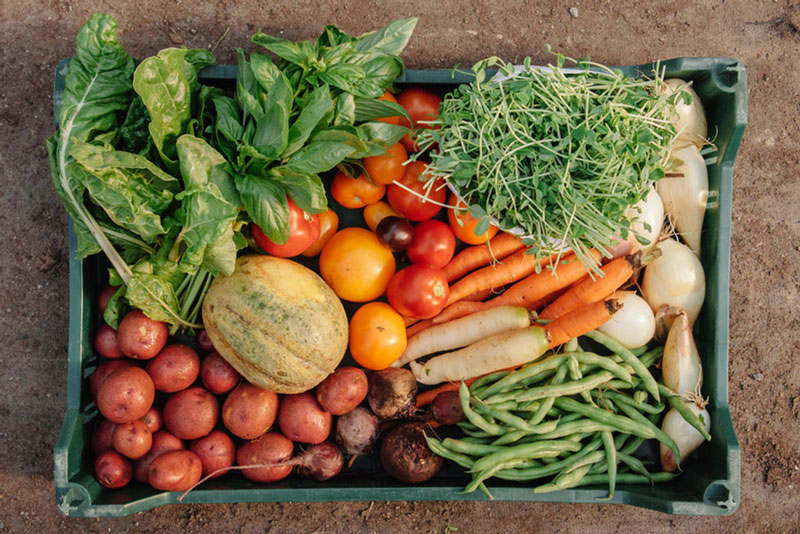Have you ever wanted to have a fresh supply of food at your fingertips? The grocery store may satisfy this desire to an extent, but there is nothing more satisfying than growing your own food and eating it with family and friends.
It is also nice to be able to go outside and pick a few lettuce leaves to toss on your sandwich, or a few fresh basil leaves to freshen up your Italian lunch leftovers.
For many people, growing their own food takes time to get right, just like cooking. With some research and trial-and-error, even you can have your own garden. Just follow these simple tips and you can be on your way to harvesting your own dinner.

Choose an Optimal Growing Location
Observe your living space for areas that get regular sunlight. When is the sun the strongest in that area and for how long? Is there proper drainage? Is it in the shade of another plant/tree?
Watch these potential growing areas for these factors and think about what plants will grow well there. If an area gets less than 4 hours a day of full sunlight, only grow plants that love shade, such as spinach and kale. If the area is in a low-lying spot, consider moving to higher ground or placing enough rocks and topsoil to allow the rain runoff to flow elsewhere.
Initial placement of your garden will determine how well your harvest is year after year.
Feed Your Food
Before planting, research what kinds of soil each plant grows the best in, then look at your soil. For balcony gardens, potting soil is nice and easy. But for a garden in the ground, the soil may have a clay-like consistency that makes drainage difficult.
Certain plants require “feeding” or fertilization. You can create your own inexpensive and environmentally friendly fertilization from composting old fruits, vegetables, coffee grounds, and egg shells. There are also store-bought fertilizers for specific plants such as tomatoes and roses that can be more difficult to thrive.
If your plants are fed appropriately, they will be healthier and produce a better harvest for you.
Doctor Your Food
Just as you look for symptoms when you get sick, you should also watch your plants’ health. If there are any changes in leaf color, or if you see the plants begin to wilt, they are likely sick from:
- Dehydration
- Overhydration
- Lack of a Particular Nutrient
Research the plant’s specific symptoms online and treat them accordingly.
Also be sure to weed regularly if your garden is in the ground. You do not want weeds to choke out your plants or suck up nutrients from the soil.
There are chemical weed killers available at many stores but do research about positive weed killers. Many are still concerned on the verdict in the Roundup lawsuit, so it’s wise to avoid Roundup products or any weed-killing chemical that made headlines for exposure to carcinogens.
If you hate weeding or feel like you do not have time for it, there are natural solutions. You can cover the area with mulch to provide new nutrients for your plants. This also decreases new weed growth.
There are other options such as covering the area with straw, or a tarp in the winter to discourage any growth at all. This way, any potential weeds will be killed off and will not return the next year. Then you can have a fresh lot to grow your food.
If you love food and have an interest in having a fresh plate of fruits, veggies, and herbs throughout this growing season, then remember to plan a little before you plant. Be sure to choose an optimal growing location, fertilize your plants accordingly, and stay on top of your plants’ health. Most importantly, savor the food you worked so hard to keep alive until harvest. It will be worth the wait!